
Len Carparelli knew The Lionel Story very well. This talented artist, who made a career from restoring trains, primarily locomotives, built by Lionel during the post-World War II era of production, understood deeply the heritage that had shaped him. Len respected greatly the painters and designers who had come before him, and he aimed with […]
Read More…
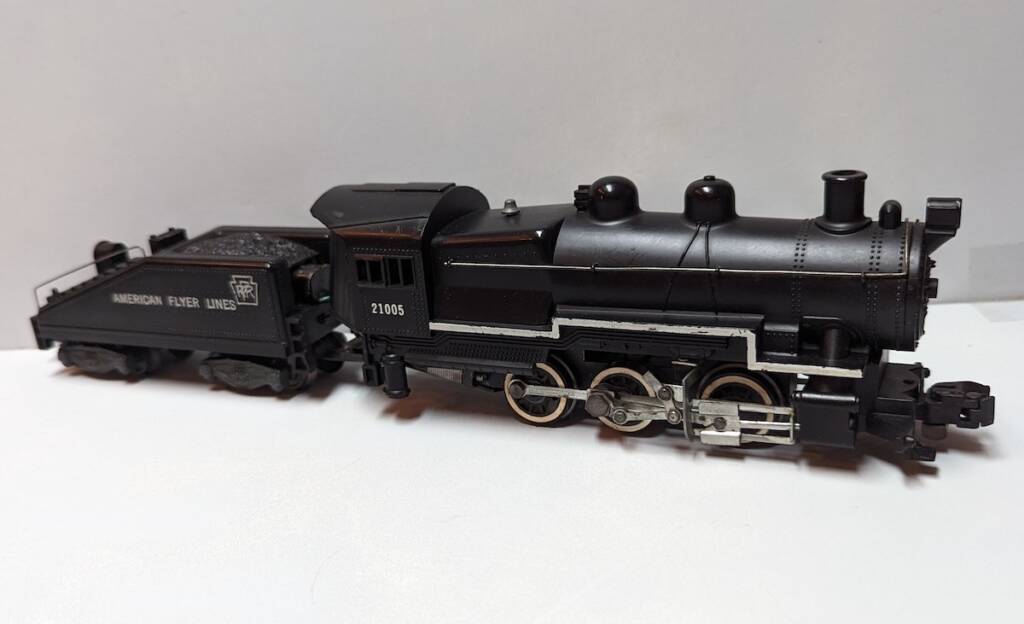
In its heyday as “The Standard Railroad of the World,” the Pennsylvania Railroad had thousands of trackside industries systemwide to service. Each needed regular switching, and many were located in industrial complexes with tight clearances and sharp curves. The PRR developed the 0-6-0 switcher, or as they called it, a “shifter.” The first model B6 […]
Read More…

From Midwest farmlands to the Pacific Coast, and the mountains and deserts in between, the Atchison, Topeka & Santa Fe Railway offers a buffet of modeling opportunities. This popular former Class I railroad has captured the hearts of model railroaders, and there are many modeling products and materials readily available to help modelers go “Santa […]
Read More…
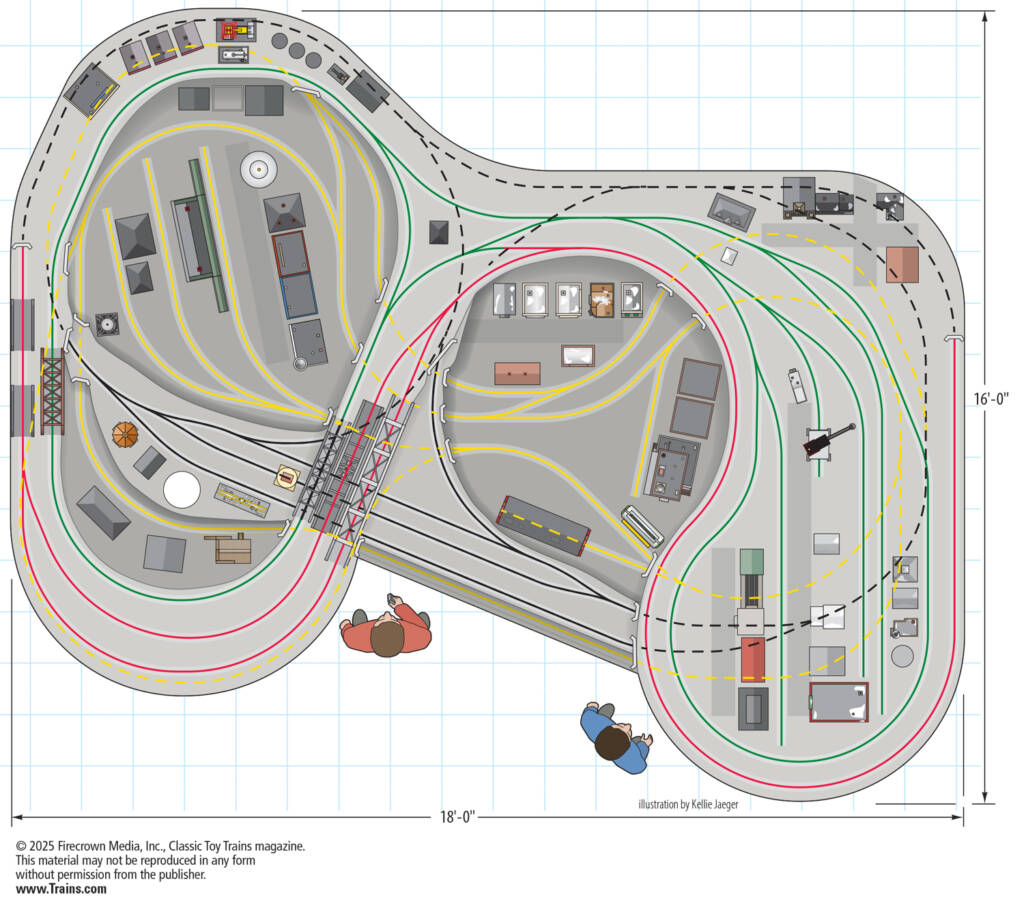
Name: Norm Jurgen’s O gauge layout Dimensions: 16 x 18 feet Track and switches: Lionel FasTrack (diameters range from 60 to 72 inches) Motive power: Lionel Rolling stock: Lionel Controls: Lionel Nos. 22983 180-watt PowerHouses (9), CW-80 transformer (5) with TrainMaster Command Control Accessories: Lionel, MTH Structures: Department 56, Lionel, MTH, Woodland Scenics Vehicles: Altaya, […]
Read More…
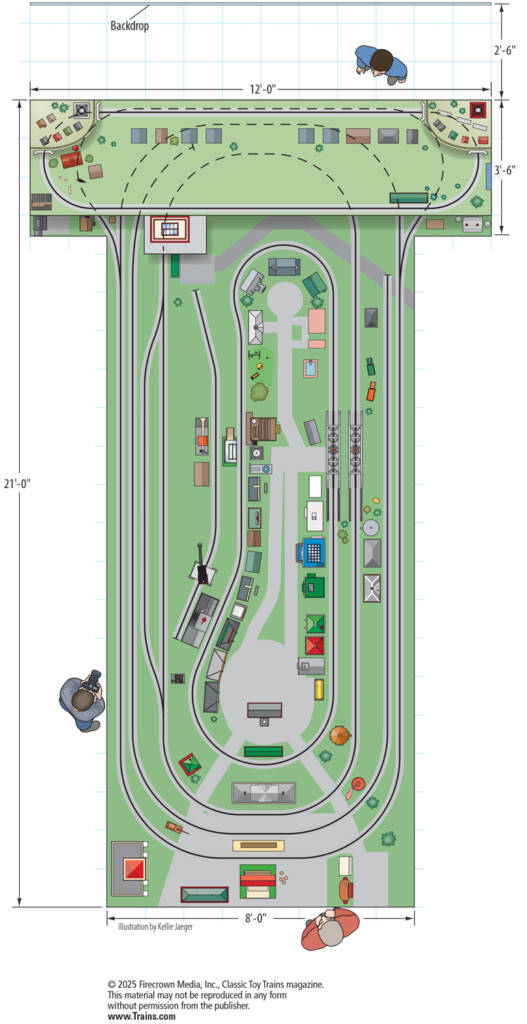
Name: Jim Steed’s Blairsville & Georgia Southern RR Gauge: O Dimensions: 8 x 21 feet Track: K-Line, Lionel, Menards (diameters range from 31 to 54 inches) Switches: Lionel Motive power: Lionel (postwar, modern), MTH, Williams Rolling stock: Lionel (postwar, modern), MTH Controls: Lionel type-Z, MTH No. Z-4000 (3) transformers Accessories: Hafner, Lionel (postwar, mod-ern), Marx, […]
Read More…
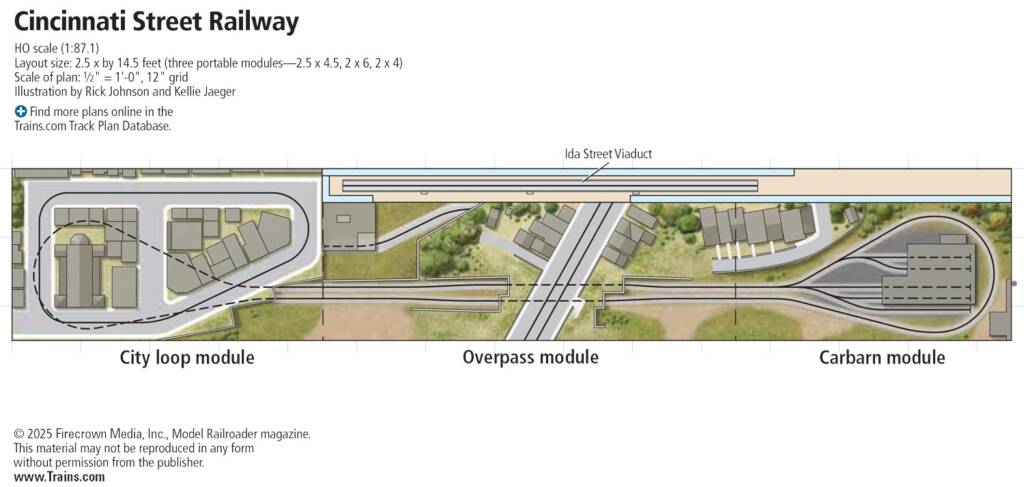
Facts and features Name: Cincinnati Traction Scale: HO (1:87.1) Size: 2′-6″ x 14′-6″ Prototype: Cincinnati Street Ry. (city streetcars) and Cincinnati & Lake Erie (interurban) Locale: Cincinnati, Ohio Era: 1930s and ’40s Style: shelf Mainline run: Approximately 24 feet (dogbone on interurban rapid transit line) Minimum radius: 7″ on streetcar line, 11″ on interurban rapid […]
Read More…
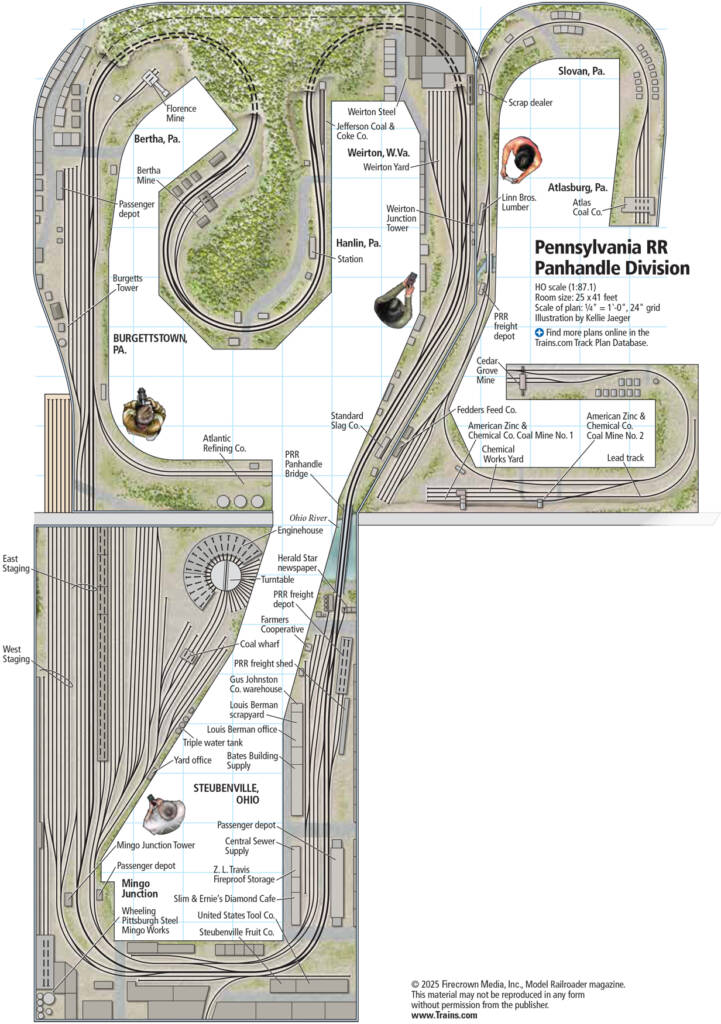
Facts and features Name: Pennsylvania RR Panhandle Division Scale: HO (1:87.1) Size: 25 x 41 feet Prototype: Pennsylvania RR Locale: eastern Ohio, western Pennsylvania, and West Virginia panhandle Era: late 1940s and early 1950s Style: walk-in Mainline run: 150 feet Minimum radius: 36″ (main), 24″ (branch) Minimum turnout: No. 6 (main), No. 5 (branch) Maximum […]
Read More…
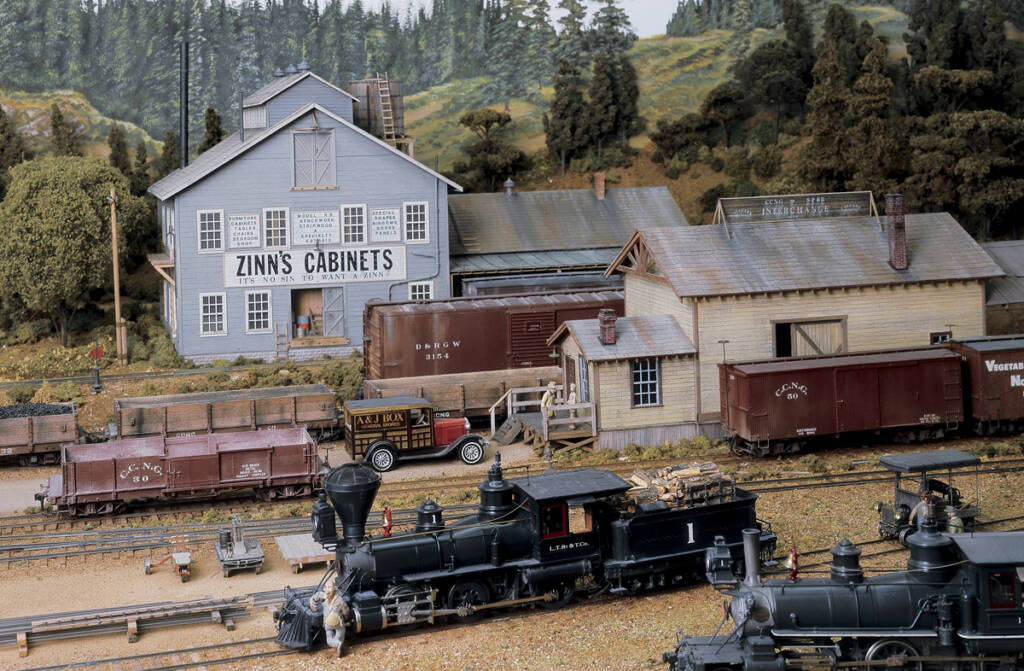
When David Clune began work on his On3 Cascade County Narrow Gauge in 1985, he intended it to be a small model railroad. His initial plan was to have a freight railroad that ran between two small towns, incorporating enough rail-served industries to keep two operators busy for an evening. But before David knew it, […]
Read More…

Paul and David Bradt’s Ardiono Projects offers multiple ways to use Arduino and Raspberry Pi microcontrollers for your model railroading projects. Buy the book here. Code for Button/Blink Test (SN095) – Chapter 1, page 11 This code is basic but allows the reader to gain insight into key elements for several other projects in this […]
Read More…
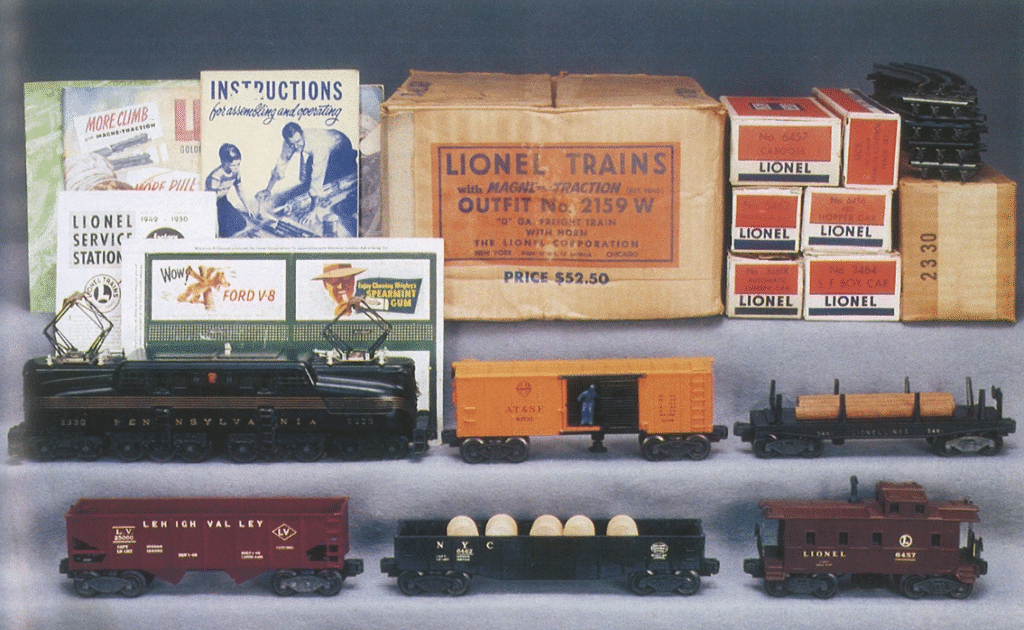
Lionel’s No. 2159W GG1 Freight Set for 1950 often has received criticism from collectors for being less than outstanding. In fact, this O gauge outfit generally has been assessed as a disappointment because it came with some common items. Admittedly, the locomotive included with the five pieces of rolling stock outshines these freight cars and […]
Read More…

Q: I would like to feature modern automobiles on my currently under construction layout. Is there a manufacturer that makes vehicles from the late 1990s to modern day? If not, is there any way to make them? — Jake, via email A: You didn’t specify your modeling scale, Jake, but there are multiple sources for […]
Read More…

This article was originally published in the November 2002 issue of Model Railroader. Hosting an open house is a great way for model railroaders to share the hobby with others. But coordinating one that people will never forget requires not only good planning, but practice. In the past two decades, I’ve hosted several open houses, […]
Read More…












